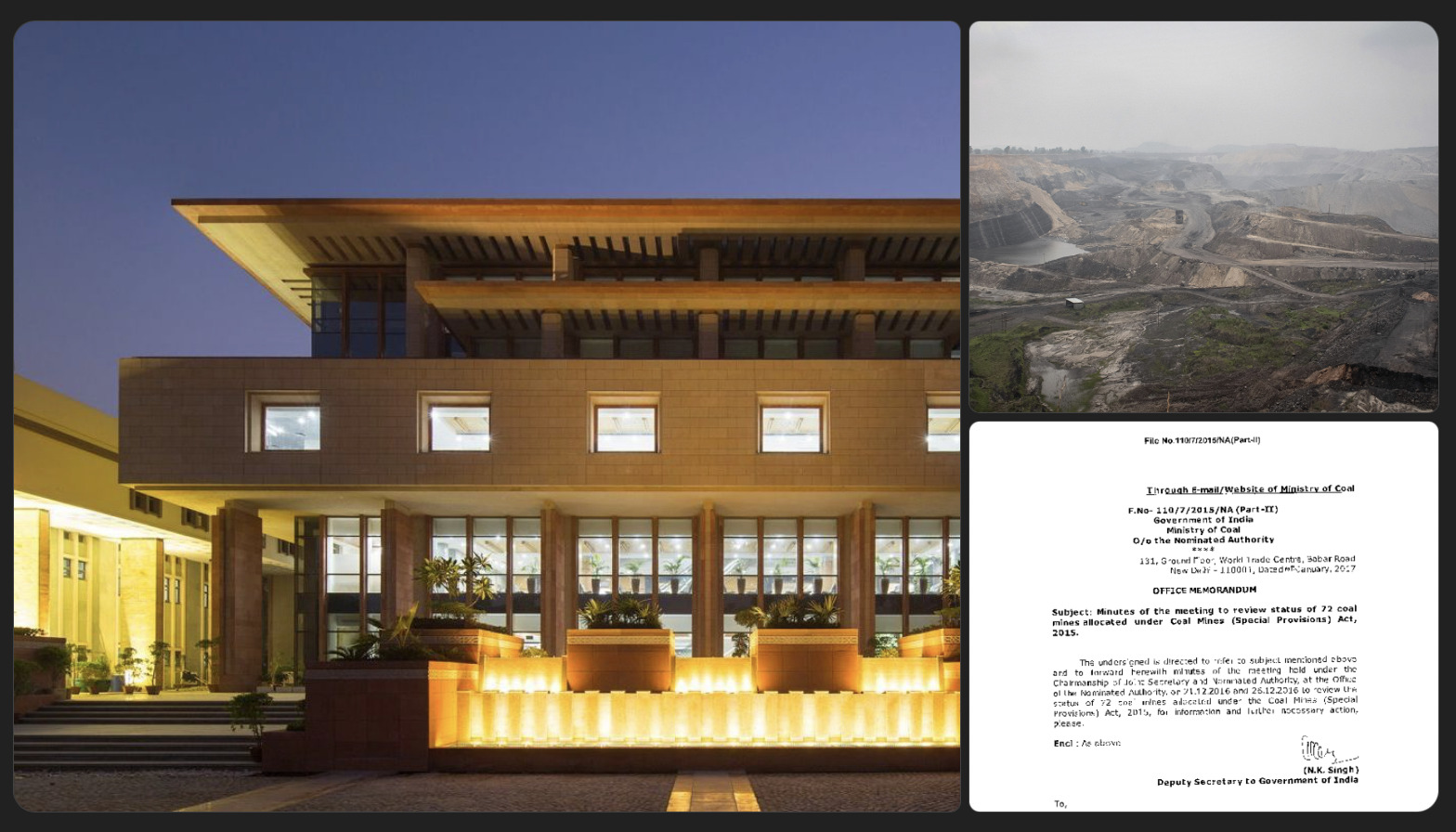View News
Delhi High Court Holds Coal-Block Allocation Obtained By Deceit Can Be “Property” Under Prevention of Money Laundering Act, 2002 (PMLA)

Delhi High Court Holds Coal-Block Allocation Obtained By Deceit Can Be “Property” Under Prevention of Money Laundering Act, 2002 (PMLA)
Introduction
In a significant recent judgment, the Delhi High Court has held that an allocation of a coal block obtained by way of misrepresentation or deceit can be treated as “property” under Section 2(1)(v) of the PMLA and the profits derived from its exploitation can constitute “proceeds of crime” under Section 2(1)(u) — thereby opening the door for attachment and other remedial powers of the Enforcement Directorate (ED) under the PMLA statute.
The judgment reverses a prior single?judge ruling of July 2022 and represents a tightening of enforcement doctrine in the space of natural-resource allocations and money-laundering.
This article explores the facts, key legal issues, judgment, implications, and critical commentary of the decision — suitable for publication on law-platforms and for practitioners.
Facts of the Case
-
The case involves the allocation of the “Chotia coal block” (in Chhattisgarh) to Prakash Industries Ltd (“PIL”) in 2003.
-
The ED alleged that the allocation was secured through misrepresentation / forging of documents concerning financial capacity and industrial set?up, thereby constituting a scheduled offence under the PMLA scheme when read with the alleged predicate offences (such as cheating, forgery).
-
According to the ED’s Provisional Attachment Order (PAO) under Section 5 of the PMLA, the value of coal extracted and sold from the block (between 2006-07 and 2014-15) amounted to approximately Rs 951 crore.
-
In December 2021, the ED made an attachment of assets (PAO) of about ?227 crore linked with the allocation. The single judge in July 2022 quashed the PAO, holding that the allocation letter alone could not be treated as “property” or “proceeds of crime”.
-
On 17 October 2025, a Division Bench of the Delhi High Court (Justices Anil Kshetarpal & Harish Vaidyanathan Shankar) reversed the single judge order and held in favour of the ED.
Legal Issues Before the Court
The judgment pivots on several inter?linked legal questions:
(a) What is “property” under Section 2(1)(v) of the PMLA, and can an allocation letter (coal-block allotment) qualify as such?
Section 2(1)(v) defines “property” as:
“… any kind of property, whether movable or immovable, corporeal or incorporeal, tangible or intangible, and includes?… proceeds of crime.”
The pivotal question: can an administrative allocation letter for a coal block (which confers a right to obtain a mining lease and extract coal) be treated as an “intangible property” in the PMLA sense?
(b) What constitutes “proceeds of crime” under Section 2(1)(u), and when does the offence of money-laundering under Section 3 get triggered?
Section 2(1)(u) defines “proceeds of crime” as:
“… any property derived or obtained, directly or indirectly, by any person as a result of criminal activity in relation to a scheduled offence … and includes the value of such property.”
Section 3 penalises any process or activity connected with such proceeds of crime (possession, use, concealment, acquisition, projection as untainted property). The central issue: if the allocation is obtained fraudulently and then exploited to generate profits, can those profits (and the right/letter itself) be captured as proceeds of crime?
(c) Does recognition of such allocation rights as “property” unduly encroach on the State’s domain of natural?resource allocation?
There is a policy/constitutional dimension: coal blocks are natural resources vesting in the State (or central government) and allocation rights are subject to regulatory regime. The question is whether treating an allocation letter as “property” under PMLA interferes with the State’s regulatory prerogative.
(d) Procedural validity of attachment, nexus and valuation issues
For an attachment under Section 5 of PMLA (or confirmation under Section 8) to be valid: there must be a prima facie case relating the property to proceeds of crime, correct valuation, notice to parties, adjudicating authority confirmation etc. The single judge’s earlier decision had held that allocation alone cannot give rise to proceeds; the Court now revisits these procedural concerns.
The Judgment – Key Findings
Recognition of Allocation Letter as “Property”
The Division Bench held:
-
In the modern era, intangible rights (copyrights, trademarks, licences, contractual entitlements) have immense legal and commercial significance. The definition of “property” under Section 2(1)(v) must be given a “wide legal lens”.
-
The coal-block allocation letter was not a mere administrative formality but an instrument evidencing a right or interest to seek a mining lease and extract coal — thereby capable of being “property”.
-
Bench rejected the single judge’s narrower view that allocation cannot constitute property. It held that where the allocation is obtained by misrepresentation/fraud, the right becomes tainted and qualifies as “property involved in money laundering”.
Proceeds of Crime & Money Laundering
-
The Court found the chain of events: fraudulent allocation, obtaining the block extraction and sale of coal generation of profits and use of those funds constitutes “proceeds of crime” under Section 2(1)(u).
-
Moreover, the continuing nature of the offence of money-laundering under Section 3 (and explanation (ii) thereto) means that even if the original mis-allocation occurred earlier, the possession/use of profits later gives jurisdiction.
-
The Court upheld the ED’s attachment of assets, by observing that the allocation letter enabled commission of money-laundering and thus the letter and profits fall within the PMLA mechanism.
On State’s Resource Allocation Rights
-
The judgment addresses the policy dimension: The court emphasised that the allocation rights are valuable rights and cannot be immune from capture under money-laundering law when obtained fraudulently. The mere fact that the resource is state-owned does not preclude recognition of the right as property when illegally obtained. (implicitly)
-
The bench recognised the need to preserve state/regulatory rights, but held that the existence of public resource does not immunize a tainted right from being captured under PMLA.
On Procedural Aspects
-
The earlier single judge’s finding that allocation alone cannot be “property” was set aside. The Division Bench held that the valuation of extraction (approx Rs 951 crore) and connection to profits was sufficient for prima facie attachment under Section 5.
-
The Court emphasised the statute allows attachment of “value” of property involved in money-laundering even when actual physical property may not be present.
Implications of the Judgment
For Enforcement & Regulatory Landscape
-
This decision broadens the enforcement reach of the ED: natural resource allocations (mines, coal blocks, leases) secured by deceit can now be treated as “property” and attract PMLA action.
-
Companies in infrastructure, mining, natural resource, allocation/lease business must now exercise heightened due diligence: Fraudulent representation in allocation, or subsequent exploitation may trigger PMLA liability.
-
It may serve as precedent in future cases where administrative rights/allocations are obtained by misrepresentation and exploited — for example spectrum allocations, infra concessions, mining leases, licences.
For Corporate/Business Sector
-
Corporations must ensure: (i) truthful disclosures in allocation/lease applications; (ii) full compliance with statutory and regulatory regime; (iii) accurate accounting of utilisation, profits, diversion of funds; (iv) avoidance of mixing legitimate and illegitimate gains.
-
Legal departments must factor PMLA risk in allocation/lease deals, especially where state/regulatory rights are involved.
For Legal Practitioners
-
The judgment will likely be cited for the proposition that intangible rights/allocations can be “property” under PMLA.
-
Defence strategies must now account for the risk that allocation letters/rights may be treated as tainted property; hence challenge the nexus, valuation, time-link, employment of proceeds.
-
Regulatory counsel must monitor the growing overlap between allocation/lease law, administrative law, and PMLA jurisprudence.
On State Policy / Resource Governance
-
On one hand, the judgment reinforces accountability for misuse of public resources.
-
On the other hand, it raises a policy tension: Will companies shy away from seeking allocations or mining rights due to fear of PMLA action, especially when rights are later challenged?
-
The State must ensure allocation processes are transparent, audit trails robust, and mechanisms exist to detect misrepresentation at the outset to avoid later PMLA disputes.
Critical Commentary & Reflection
Strengths of the Judgment
-
It updates the law on “property” in PMLA to reflect modern commercial realities (intangible rights, valuable licences), which is appropriate given the evolution of business assets.
-
It strengthens the anti?money-laundering regime in the context of natural-resource exploitation, which has been a recurring area of abuse in India.
-
By reversing the narrower earlier view, it aligns jurisprudence with the legislative intent of PMLA (to deprive criminals of illicit gains).
Areas of Concern / Open Questions
-
Scope of “right” as property: The decision may raise uncertainty for allocation rights that are lawfully obtained — does every allocation become “property”? The judgment emphasises the fraudulent/tainted nature.
-
Valuation complexities: While the ED estimated gains (?951 crore) in this case, in many cases tracing, valuing, and attributing gains from allocation ? exploitation ? profit may be challenging and contested.
-
Encroachment on State prerogative? Some may argue that resource allocation is purely regulatory, and classifying allocations as private “property” in PMLA may have unintended consequences. The Court attempts to balance this by focusing on misrepresentation/fraud.
-
Temporal concerns: Many allocations were pre-PMLA or pre-amendment; options for businesses may be limited; fairness arguments (legitimate expectations) may arise.
-
Link between predicate offence and misuse: While PMLA offences are independent, they rely on a predicate offence and connection to proceeds. The defence may argue that until the scheduled offence is conclusively established, PMLA liability is premature. The judgment recognises the continuing nature of money-laundering.
Take-Away Summary for Practitioners
| Point | Summary |
|---|---|
| Property under PMLA | Intangible rights (e.g., coal-block allocation letters) can qualify as “property” under Section 2(1)(v) if acquired by deceit and confer economic value. |
| Proceeds of Crime | Profits derived from exploitation of such rights (e.g., coal extraction, sale) can constitute “proceeds of crime” under Section 2(1)(u) if obtained via criminal activity. |
| Money Laundering Offence | Under Section 3, any act of possession, use, concealment, layering, projection of such tainted property/ proceeds triggers offence, given its continuing nature. |
| Attachment Powers | The ED may attach assets (including value of rights) under Section 5 once prima facie connection is shown; judicial review will consider nexus and valuation. |
| Defence Strategy | Challenge the nexus between allocation ? exploitation ? gains; demonstrate lawfulness of acquisition; contest valuation; show absence of active “use/acquisition” of proceeds; raise legitimate business expense/investment. |
| Corporate Compliance | For companies seeking allocations/leases: maintain full disclosure, regulatory compliance, documentation of revenue streams and utilisation of rights; monitor risk of mis-representation and post-allotment exploitation. |
Conclusion
The Delhi High Court’s recent ruling marks a significant milestone in the jurisprudence of the PMLA. By recognising a coal-block allocation letter obtained by deceit as “property” and holding that the subsequent financial benefits constitute “proceeds of crime,” the Court has reinforced the net of anti?money?laundering laws over misuse of natural-resource allocations.
For the business community, this judgment serves as a caution: acquisition of resource rights must be above board, exploitation must be legitimate, and associated revenue flows must stand scrutiny of enforcement agencies. For enforcement agencies, it provides an enhanced framework to pursue ill?gotten gains through the PMLA. For policymakers, it highlights the interplay of regulatory/resource allocation regimes and financial crimes frameworks.
Unlock the Potential of Legal Expertise with LegalMantra.net - Your Trusted Legal Consultancy Partner”
Disclaimer: Every effort has been made to avoid errors or omissions in this material in spite of this, errors may creep in. Any mistake, error or discrepancy noted may be brought to our notice which shall be taken care of in the next edition In no event the author shall be liable for any direct indirect, special or incidental damage resulting from or arising out of or in connection with the use of this information Many sources have been considered including Newspapers, Journals, Bare Acts, Case Materials , Charted Secretary, Research Papers etc
Anshul Goel
LegalMantra.net Team

